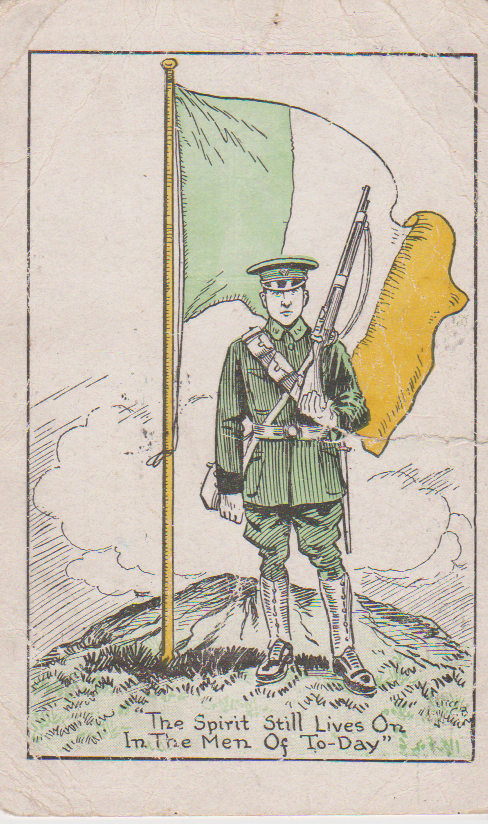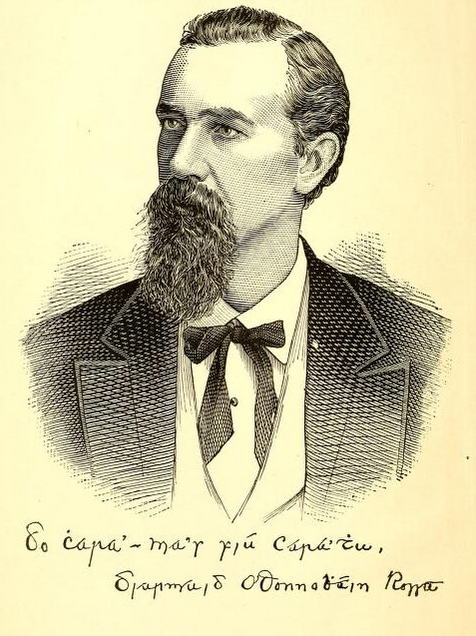I noticed a Facebook post getting quite a few shares this morning on my timeline, in relation to Varahagiri Venkata Giri, the fourth President of India. The Sinn Féin 1916 National Commemorations page, which has been posting some great little historical nuggets, posted an image of Giri, along with a brief history stating:
The fourth President of India Varahagiri Venkata Giri was a member of Sinn Féin and an Irish Volunteer in 1916 whilst studying law at U.C.D. and was expelled for his activity.
At the time Giri came to power in India in 1969, the Irish Independent wrote that he was “a founder of the Indian Labour Movement, and is known to many as the Jim Larkin of India.” Giri, the paper noted, was a student at University College Dublin during the Irish revolutionary period, “taking his LLB and becoming a barrister, before being deported by the British.”
Giri’s name appeared in the Freeman’s Journal in June 1916, in the aftermath of the insurrection, where it was noted that he was called to a bar, described as the “oldest son of Varahagiri Venkata Jagiah, of Berhampore, Madras Presidency, India.” He was one of several Indians reported to have been called to the bar in that edition of the newspaper. To Giri, it would have meant little – he had already received an order from the authorities to leave the UK by July 1st!
Of his time in Ireland, we can learn much from his memoir My Life and Times, which was published in 1976, and which Colm Kenna drew on for an interesting An Irishman’s Diary column in 2008. In it, he recalled being lectured by Thomas MacDonagh, who would later be executed for his role in the insurrection that was to come. Giri recalled that “his classes were very popular and his cottage at the foot of the Dublin mountains was a centre of literary and revolutionary thought.” Trade union leader James Connolly made a particular impression on Giri, who recalled meeting him on “several occasions”, remembering that “the plight of workers in Ireland at that time was miserable. I saw grinding poverty and squalor in the areas of Dublin inhabited by the working class.”
In Dublin, Giri was active within the Dublin India Society, which drew support from the dozens of Indian students in the Irish capital. In the aftermath of the struggle of Indians in South Africa for equal rights in 1914, his society in Dublin prepared a pamphlet entitled The South African Horrors, which was well received. The cause of the Indian people received sympathetic coverage in Irish nationalist newspapers, including Arthur Griffith’s Sinn Féin, as well as The Irish Volunteer.
Engagements between Irish nationalists and Indian nationalists can be found in the Bureau of Military History statements, which recorded the memoirs of participants in the 1913-21 period. A particularly intriguing story of international espionage and plotting is contained in the witness statement of Robert Brennan, a senior figure in the Sinn Féin Press Bureau during the War of Independence. He recalled being introduced to two Indian men here, who presented him with a most interesting proposal:
The first was a very big and prosperous gentleman, (Mr. A.) who told me he belonged to the constitutional wing of the Indian Nationalists. He owned a lot of chain stores in India. He assured me he was willing to fall in with any plan the second Indian, whose was Bomanji, and I agreed to. He did not know what Mr. Bomanji had in mind and he did not want to know. – The less he knew the better. He then withdrew and Mr. Bomanji came in. He was a small, quick, intelligent gentleman and he told me at once that he belonged to the militant group in India. His plan was twofold. Firstly, the Indian Moslem League and the All Indian Congress Party were, for the first time – holding their annual conventions in the same town and on the same date. It had been agreed between the leaders that at a pre-arranged signal, a motion could be put forward simultaneously, in both conventions that the rival sects would join hands for the purpose of ending the British occupation. They were then to meet jointly and set up a Provisional Government for India and, thereafter, carry on on Sinn Fein lines. Our part was to send one or two advisers who would, behind the scenes, guide the movement.
It was necessary that these advisers should get to India as soon as possible before the day set for the Conventions. The other plan of Bomanji’s was to prepare for a guerilla war against the British. For this purpose, he needed a number of Irish guerilla leaders, twenty or thirty to start off with. They would ostensibly be employed in the chain stores owned by Mr. A. but their real work would be to train companies of selected men in the science of guerilla warfare.
In subsequent decades, there remained strong sympathy for India in Irish nationalist circles, which was reflected in the pages of newspapers like An Phoblacht in the 1930s. Indian speakers were common at republican events in Ireland, and Brian Hanley has written in his history of the IRA in this period that “during 1931 the organisation even attempted to bring Mahatma Gandhi to Ireland for a speaking tour.The presence of Indian speakers was thought by the IRA to have been useful when promoting the ‘Boycott British’ campaign during 1932.” The following advertisement frequently appeared in An Phoblacht during the period, encouraging people to support the Indian Store on Dame Street:





















 Click on the book for more.
Click on the book for more. Click on the book for more.
Click on the book for more.